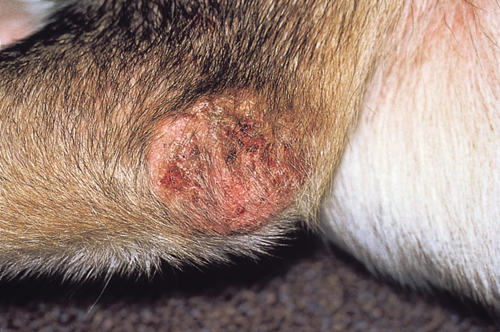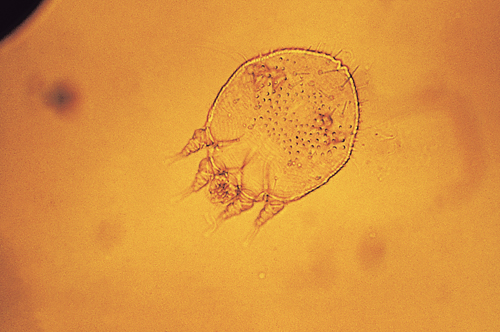Difference between revisions of "Small Animal Dermatology Q&A 11"
Jump to navigation
Jump to search
Ggaitskell (talk | contribs) |
|||
| Line 24: | Line 24: | ||
|a3= | |a3= | ||
Recently, an in vitro serum antibody test was marketed in Sweden for the diagnosis of this parasite. The test is reported to have a sensitivity of 83% and a specificity of 92% (Curtis, 2001). | Recently, an in vitro serum antibody test was marketed in Sweden for the diagnosis of this parasite. The test is reported to have a sensitivity of 83% and a specificity of 92% (Curtis, 2001). | ||
| − | |l3= | + | |l3= |
</FlashCard> | </FlashCard> | ||
Revision as of 18:05, 6 June 2011
| This question was provided by Manson Publishing as part of the OVAL Project. See more small animal dermatological questions |
An intensely pruritic dog was presented for examination. The dog’s pruritus developed acutely approximately 3 weeks ago. The dog had no history of skin disease prior to this episode. The dog was normal on physical examination except for being intensely pruritic and having ‘scaly’ elbows. The organism shown was found on a skin scraping from the elbow of the patient.
| Question | Answer | Article | |
| What is the organism? | Sarcoptes scabiei mite. |
Link to Article | |
| What clinical signs are associated with this parasite infestation? |
|
Link to Article | |
| What new diagnostic test is available, and what are the limitations of the test? | Recently, an in vitro serum antibody test was marketed in Sweden for the diagnosis of this parasite. The test is reported to have a sensitivity of 83% and a specificity of 92% (Curtis, 2001). |
[[|Link to Article]] | |

